At Milan Fashion Week, the Tension Between Tradition and Modernity Is on Full Display
With new talent at the helm, some of the most recognizable heritage brands are fusing a forward-thinking mentality with a history of craftsmanship.
New energy is bubbling at Milan Fashion Week.
From the spate of impressive emerging talents to the continuously strong efforts at vaunted labels like Prada and Jil Sander, the sometimes-sleepy lineup that teeters on overwrought is undergoing a period of renewal. Milan is swiftly becoming a breeding ground for young talent, with many ascendant voices finding their way to positions of power at some of the country's most important heritage brands.
Ferragamo, Etro, Trussardi and Swiss label Bally are some of the most recognizable names on the schedule that have, in the last two years, hired new creative directors to steer them into the next chapter The rhythm started with the appointment of Benjamin Alexander Huseby and Serhat Işik at Trussardi in 2021, followed by a string of hirings last spring of Rhuigi Villaseñor at Bally, Maximilian Davis at Ferragamo, Filippo Grazioli at Missoni and Marco de Vincenzo at Etro.
Over the last five days, as the Fall 2023 shows unfurled in Milan, audiences were reminded of a tension that exists between tradition and modernity in the Italian fashion industry, where the past meets the present and pushes the needle forward. The future sprawled across runways in all its glory, as designers fused a forward-thinking mentality with heritage craftsmanship.
"Italy's long tradition of craftsmanship is at the core of our country's fashion sector, and it's great to see how young people are able to combine craftsmanship and innovation," said Carlo Capasa, chairman of Camera Nazionale della Moda Italiana.
"We're entering an interesting period for Milan Fashion Week. It's been growing for the last couple of seasons, with several young creatives getting the interest of the press," says Manuel Marelli, head of creative and buying at Macondo, the famed multi-brand retailer in Milan. "It's inspiring to see established names choosing the new generation to lead their legacy into the future. It's a daring step that shows a willingness to try new paths and change perspective."
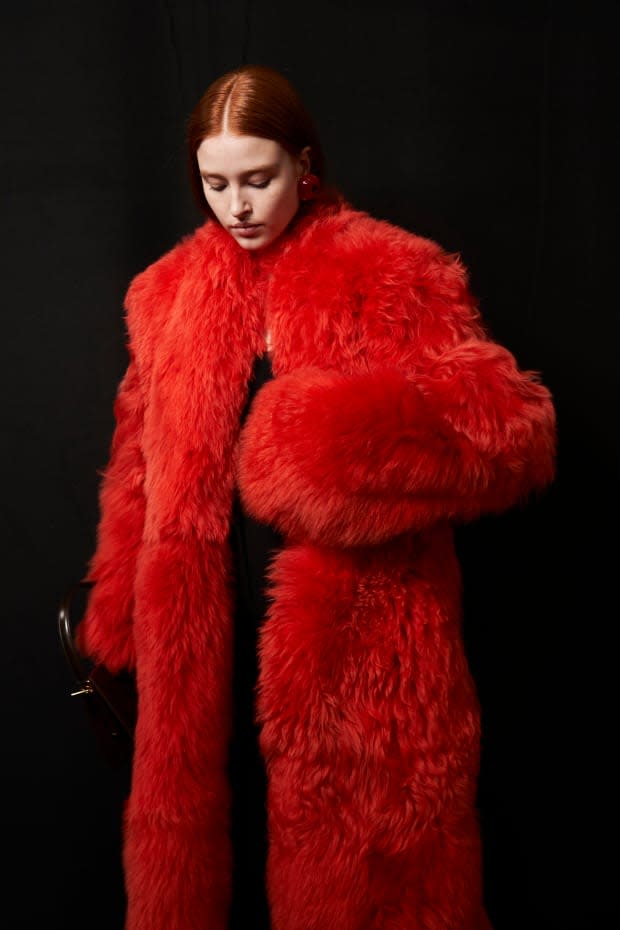
Photo: Imaxtree
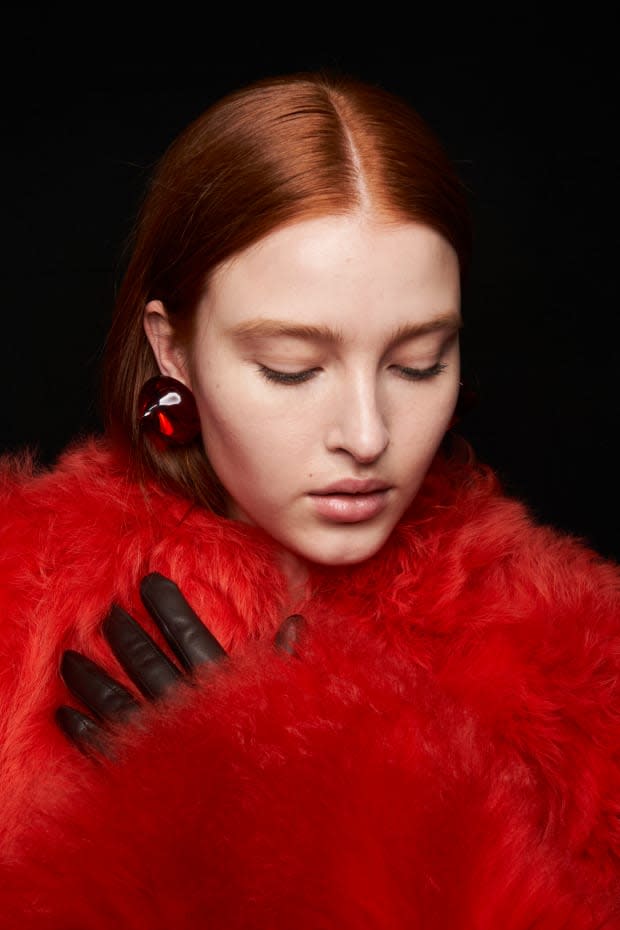
Photo: Imaxtree
British designer Davis arrived at Ferragamo a year ago, and brought with him a disruptive, sensual vision that would re-energize and give new meaning to the Florentine brand known for its footwear and Hollywood connections. It needed a star like Davis, someone with a sharp eye who trained under Grace Wales Bonner and shot to fame in London-based incubator Fashion East, to remold it according to modern tastes.
For Fall 2023, Davis looked to the house's Hollywood roots — when it dressed doyennes of the silver screen like Marilyn Monroe, Joan Crawford and Audrey Hepburn — revealing his penchant for tailoring and his strength in designing covetable outerwear. It felt cinematic, no thanks to the gargantuan show space in which he held his sophomore runway show.
Also looking to Hollywood is Villaseñor, a designer in the early stages of crafting a new identity for Bally, another brand historically known for accessories. It didn't have a discernible ready-to-wear aesthetic, so the 30-year-old ruffled the feathers of what many would consider a prim, proper and polite house with ample sex appeal that recalled famous 1990s runways, specifically the ostentation of Tom Ford-era Gucci.
The synergy between the traditional Swiss brand and Villaseñor's streetwear credentials is a fascinating one, purely because of how seamlessly it seems to be working. It might not have the ego of an epic, but it has you nibbling at your popcorn, curious to see what runway exit will come next: louche tailoring, belted leather jackets, lace dresses. Villaseñor's Bally already feels familiar — it looks convincing, reflecting how people want to dress in 2023.
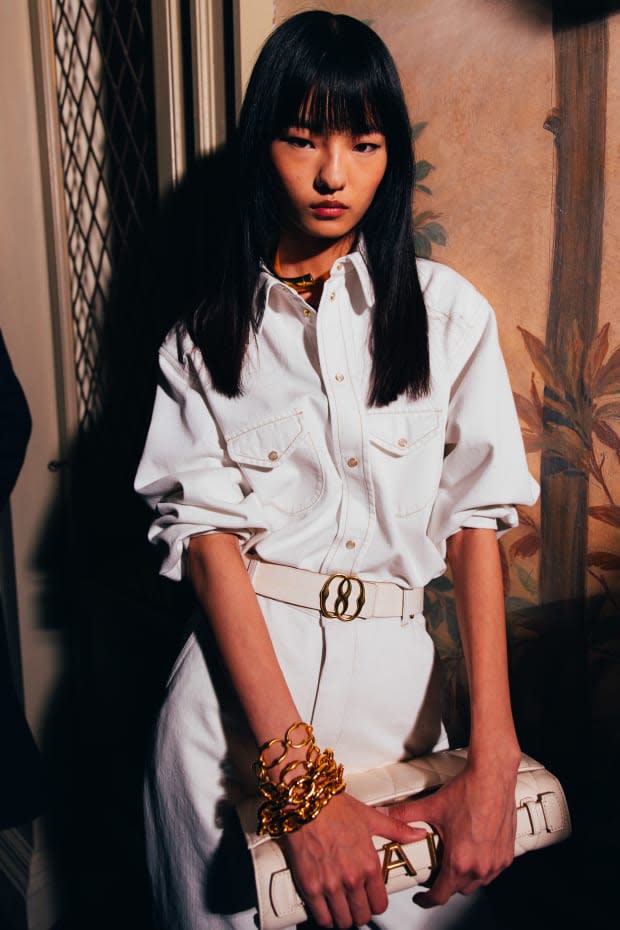
Photo: Courtesy of Bally
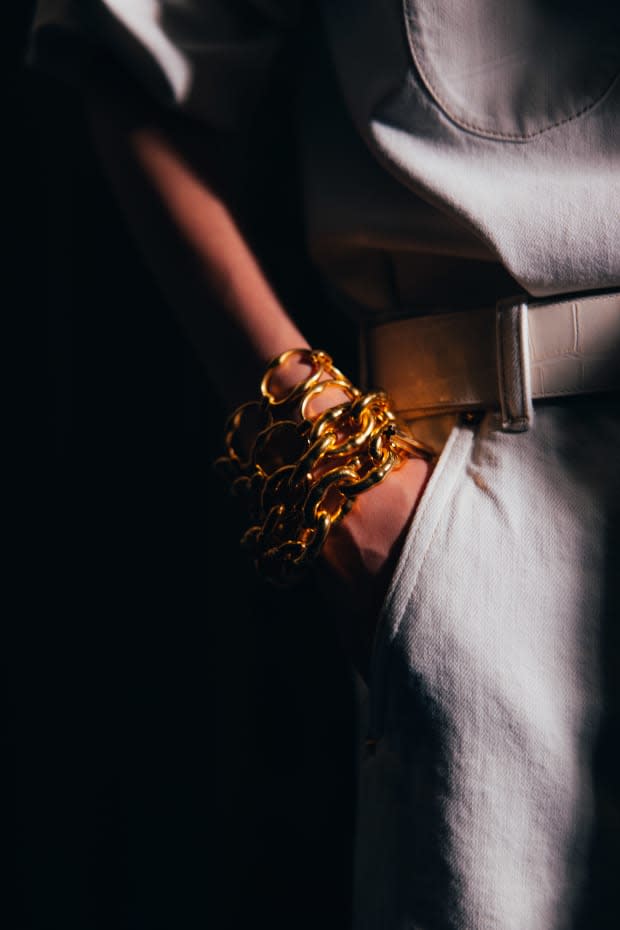
Photo: Courtesy of Bally
Odunayo Ojo, the fashion critic known as Fashion Roadman, believes we arrived at this moment of renewal at Italian and Swiss luxury brands because, while many of these houses have personnel with decades of experience, they have "an overall brand culture of employees who are set in their ways and slow to innovate, believing that their ways — the traditional ways — are always best, because they remember a time when it worked."
These companies have realized that "no innovation and being too stagnant has started to affect their financial bottom-line," he argues, "and they collectively decided to go in different directions over the past few years."
Kristen Bateman, a writer and creative consultant, believes "everyone is searching for the Bottega Veneta Daniel Lee effect."
"Especially in Italian fashion right now, heritage brands that have a legacy but are less buzzy are hoping that younger, more relevant designers like Davis or Villaseñor will reinvent them and bring new demographics to them," she says.
"It's never easy to work on a heritage brand, especially when that specific heritage can be perceived in a very different way due to the cultural discourse around it," says Silvia Schirinzi, fashion director at Rivista Studio, an independent Italian quarterly magazine that features in-depth stories about contemporary culture, arts and media. She suggests that Davis' personal touch and appreciation for the brand's history and de Vincenzo's sophistication and attentiveness deem them the right fit for their respective positions.
With that trajectory in mind, though, new designers must know the rules before they rewrite them — especially where legacy is concerned.
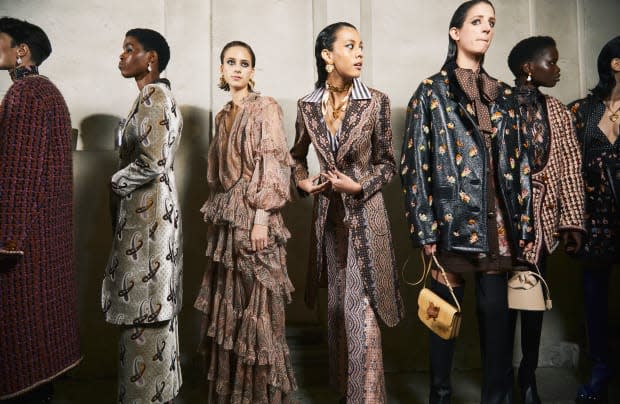
Photo: Courtesy of Etro
De Vincenzo, who garnered industry acclaim for his eponymous label, was assigned to rejuvenate Etro a year ago. With the brand's 55-year-long history of textiles in mind, the designer's gambit is a contemporary wardrobe. He brings a unique sensitivity to color and silhouette to the plate. And at the Fall 2023 show he rendered tartans, cravatteria motifs and paisley anew with a gothic edge: billowing dresses topped with chunky knits in a psychedelic palette, denim peeking out from under robes and oversized blazers. Although a bit too noisy in parts, de Vincenzo's aptitude for color allowed him to trace a new, bolder and more daring outline for the Etro customer.
Meanwhile, at Missoni, Grazioli's passage of graphic print knitwear and tailoring — with an abstract twist — served as proof that he was hired to assiduously preach the virtues of the textile-led brand. Still, there were glimpses of himself in the sexy, upbeat nature of the Fall 2023 show, especially in those sheer evening dresses in the final moments.
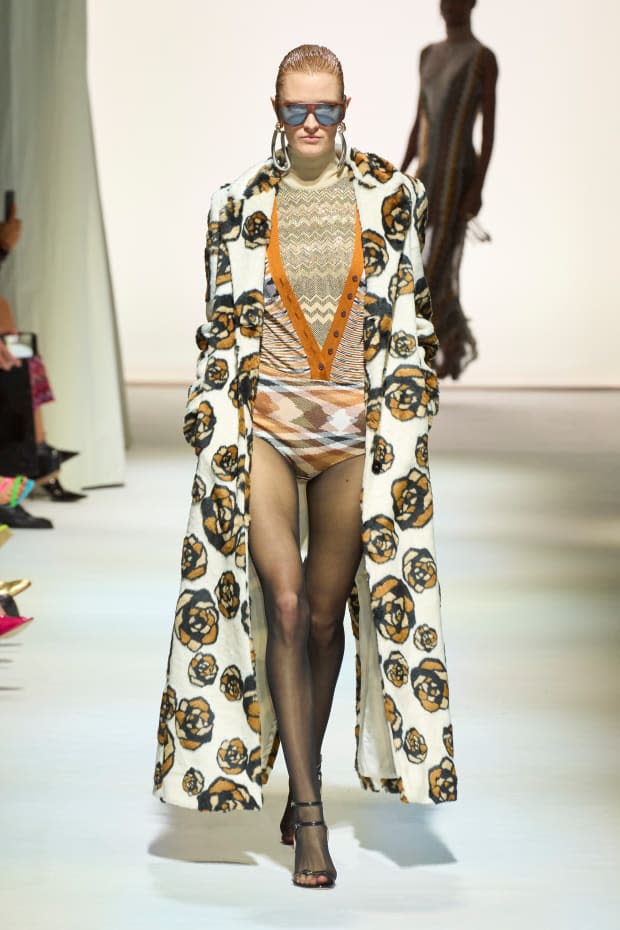
Photo: Imaxtree
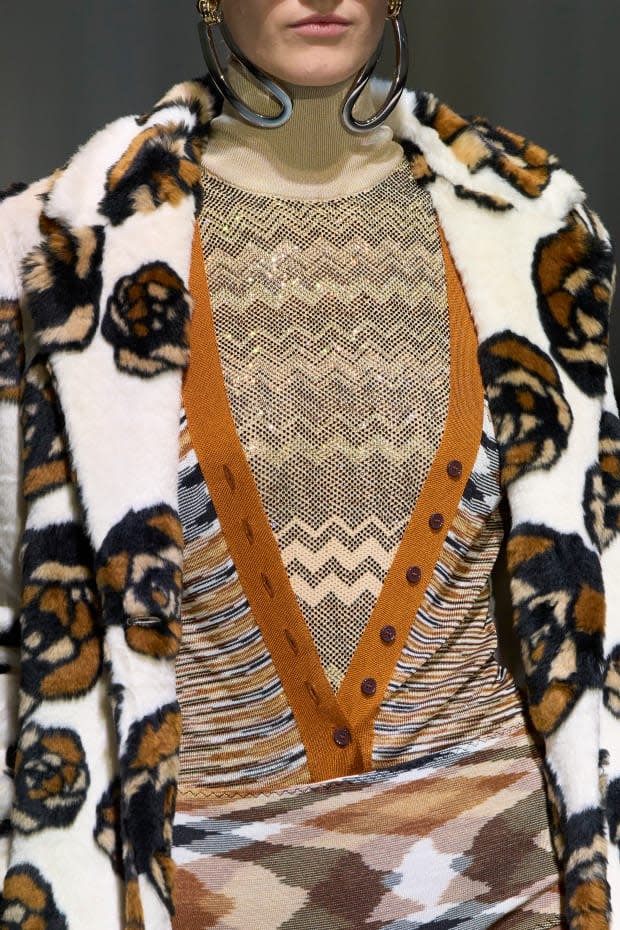
Photo: Imaxtree
Liane Wiggins, head of womenswear at MatchesFashion, is optimistic about the customer reaction to the new installments, specifically noting how de Vincenzo's "total respect for the heritage of the brand" and Grazioli's willingness to work "with the brand's incredible archive" made for wonderful turnouts in Milan.
In terms of scale, Huseby and Işik's takeover of Trussardi has been comparatively quiet, but no less interesting. Like Bally, the Trussardi name needed some dusting off and sexing up. Leave it to the pair — beloved for their work at GmbH — to subtly suffuse kinky subversion into a quintessentially, 112-year-old Milanese brand.
"At least for our generation, and outside of Italy, people have very little understanding of what Trussardi is," says Huseby. "From the start, we've approached it with a sense of great freedom."
The notion of the sciura (the famously well-heeled elderly women) served as the basis for Fall 2023. The tempo is heightened, but the brand remains unflashy. It does, however, feel decidedly younger.
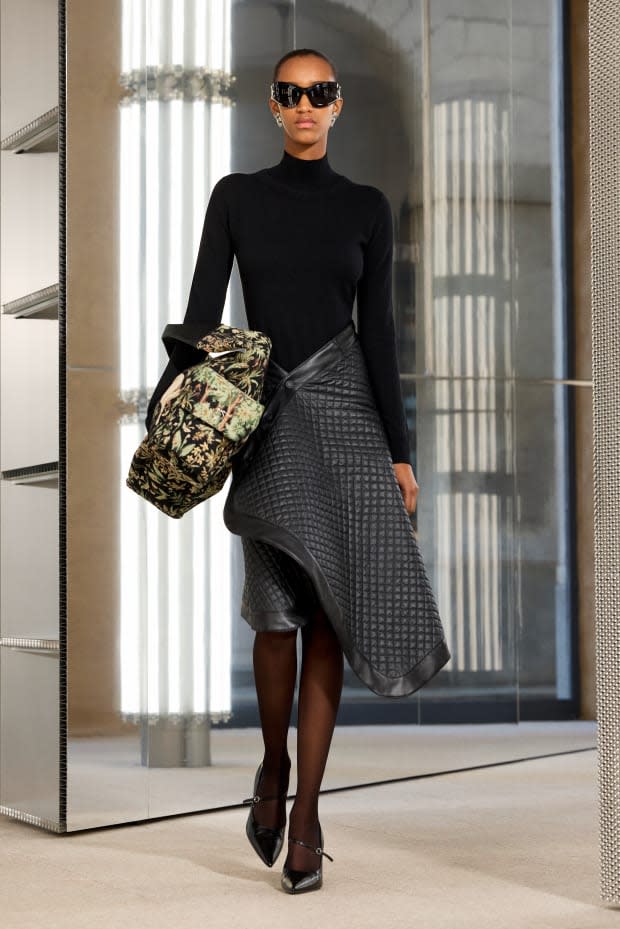
Photo: Courtesy of Trussardi
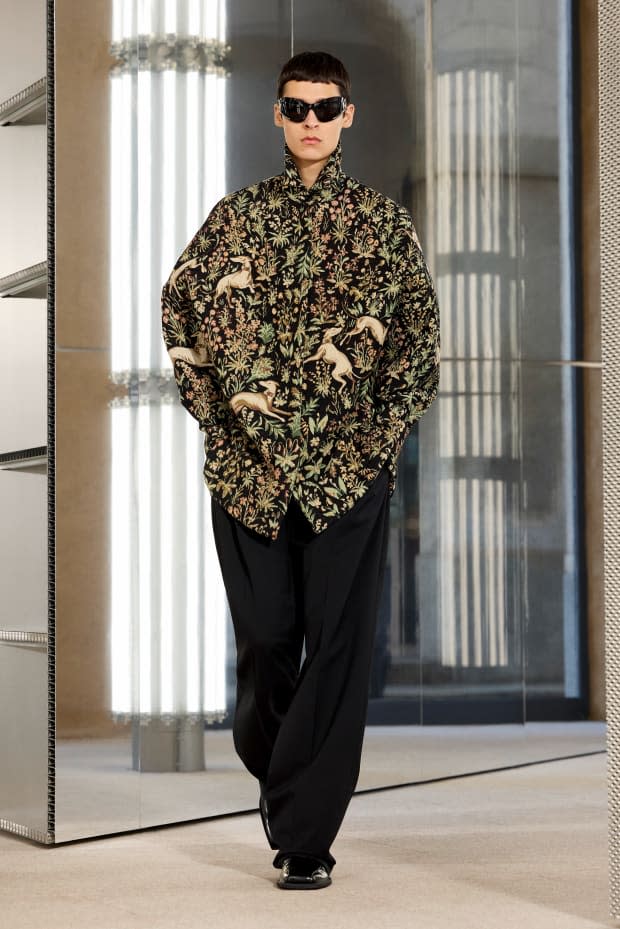
Photo: Courtesy of Trussardi
The significance of appointing designers like Davis, Villaseñor and others stretches beyond their pedigree: In a mostly white fashion landscape in Italy and Switzerland, they stand alone as some of the few designers of color in positions of power. (Earlier this month, Stella Jean backed out of Milan Fashion Week, accusing the Camera Nazionale della Moda Italiana of not doing enough to support the We Are Made in Italy project, which promotes young BIPOC talents in Italian fashion. The Camera denied the allegations.)
Ojo argues that these heritage brands "wanted people that can actually relate to today's consumers and, generally, POC designers understand the culture within different markets. Most of them grew up in Western countries, but are also close to their ethnic cultures, so they understand consumers from different regions in a way that a white French or Italian designer couldn't."
Of course, this is not the first time that Italian heritage brands have witnessed strokes of creative genius. In the 1990s, Ford brought the forthright sexuality to Gucci; in 2013, Jeremy Scott transformed Moschino into the fanciful, tongue-in-cheek house we know it to be today. In the last decade, Alessandro Michele and Lee famously refreshed the houses of Gucci and Bottega Veneta, respectively.
The most thrilling aspect of all, Schirinzi says, is "when a new designer meets the artisans who work on the collections and are the living memory of how things can be done in that environment. Taking the time to fully appreciate their expertise while bringing a new vision certainly is a difficult balance to reach, but it's necessary in order to succeed."
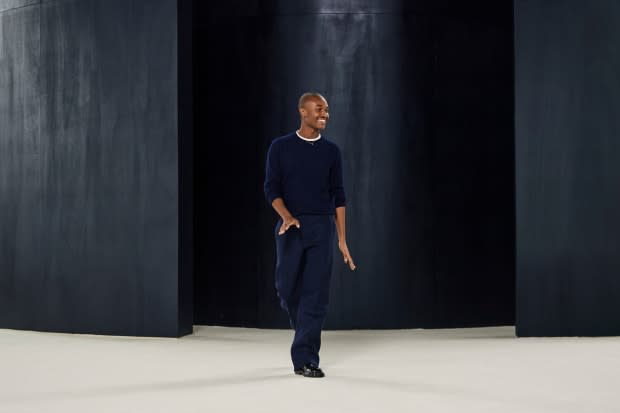
Photo: Imaxtree
For all the forward-thinking ideals of designers tasked with reshaping the identity of the most prominent fashion houses with the most storied legacies of craftsmanship, commercial constraints often mean their time is numbered. The transient nature of designer appointments means a new visual language must blossom in a restricted time frame, before its influence wanes or, in some cases, sours like old milk. (After seven years, as sales for his opulent aesthetics slowed, Michele exited Gucci in December 2022; Lee, who spent three years performing the art of reinvention, left Bottega Veneta under a cloak of suspicion in 2021.)
Of course, when one creative director falls, another rises. New ideas begin to germinate. Now, Bottega Veneta is under the creative jurisdiction of Matthieu Blazy. More than capable, his first passages in rewriting the rules of the brand have proved thoughtful, compelling studies on fabrication and silhouette; his Fall 2023 show on Saturday is a contender for the strongest of the season. Next up? Gucci has installed Sabato de Sarno, with 15 years of experience across categories, at the helm. Will it work? Well, we'll have to wait until September.
Want the latest fashion industry news first? Sign up for our daily newsletter.
